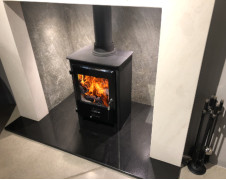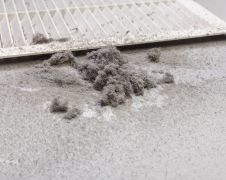Is the Air in My Home Healthy?
Have you ever thought about how clean the air is inside your home? If not, you should -- the World Health Organization identifies air pollution as the top threat to humans’ health in 2019 and when you couple that with the U.S. Environmental Protection Agency’s assessment that indoor air can be many times more polluted than outdoor air, you can see that it’s wise to consider testing your indoor air quality. But what kinds of things will an air quality test check for, and what should you do if the results come back with bad news? And where should you turn for your air quality test in the first place? So if you’ve been wondering if the air in your home is healthy, we’ve got the answers for you below, so read on:
COMMON INDOOR POLLUTANTS
- VOCs. Volatile Organic Compounds are a wide variety of molecules that can turn into gases which you then breathe. They’re released by all sorts of sources inside your home: everything from paint to solvents,
 from wood-burning stoves to gas ranges, and even something as simple as arts and crafts supplies. Over time, in your home’s closed environment, VOCs will build up and slowly decrease your indoor air quality.
from wood-burning stoves to gas ranges, and even something as simple as arts and crafts supplies. Over time, in your home’s closed environment, VOCs will build up and slowly decrease your indoor air quality. - Formaldehyde. One particularly dangerous VOC is formaldehyde, which can come from many sources, but especially from smoking, construction materials and even just new products that you bring home and take out of the box. Homes built since 1990 are more efficient at retaining heat, but that can actually make the indoor air quality worse if there isn’t proper routine ventilation to introduce fresh air into your home’s indoor environment.
- Mold and mildew. You may not see it on your surfaces, but mold and its cousin mildew can develop anywhere the temperature and moisture conditions are just right. “Mold” is simply a blanket term covering countless forms of fungi that love to grow and feed on many different materials, and every home will have at least some mold. The problem is when it isn’t found and it’s left to fester for too long, it can cause
 damage to your structure and especially when it gets airborne, it can get in your lungs and cause all sorts of health problems. DIY tests can help you know if you have toxic levels of mold, but an indoor air quality test from a professional can help to identify where the mold actually is.
damage to your structure and especially when it gets airborne, it can get in your lungs and cause all sorts of health problems. DIY tests can help you know if you have toxic levels of mold, but an indoor air quality test from a professional can help to identify where the mold actually is. - Radon. Just like carbon monoxide, which is commonly known as an indoor threat which can actually kill you, radon is a lesser-known colorless and odorless gas that can also have serious effects on your health. Radon occurs naturally in the ground and works its way into your home’s indoor air through the foundation and crawl spaces, and you may be shocked to learn that radon is the leading cause of lung cancer for non-smokers. That’s scary! The good news is that you can easily test for radon and if the levels in your home are toxic, you can easily mitigate it by having a system installed to suction away the air from beneath your home and safely ventilate it away into the outdoor atmosphere.
Call AdvantaClean for Clean Air Ducts Today!
Is Your Home Making You Sick?
Create a healthy environment for your family. Request your service appointment today!
INDOOR AIR QUALITY TESTING
You can do a few quick Google searces and easily find a variety of DIY products like testing kits and indoor electronic monitors to help identify the levels of VOCs, radon and other common indoor air pollutants. But by the time you’ve added up the cost of all these tests and devices, you could have a professional air quality technician come to your home and give you a total assessment of your indoor air quality. After all, what good will it do you to find out that you have toxic levels of mold or formaldehyde in your home if you don’t also have someone helping you to identify the sources of the contaminants? And how will you prevent them from getting back to unhealthy levels in the future? After you’ve considered the DIY route, which often involves mailing your test kit to a lab somewhere and waiting and wondering if the results will be accurate, instead we suggest hiring a professional service provider like AdvantaClean to do the testing for you. Let us give you a complete assessment of your home’s indoor air quality and how to correct it. Sometimes it’s as simple as opening your windows to introduce fresh air into the home, but in other situations you’ll need professionally-installed mitigation systems to fix it.
Since 1994, AdvantaClean has been giving American homeowners from coast to coast the peace of mind they deserve in the places where they live and enjoy time with family and friends. Our highly trained technicians use the latest technology and training to identify every source of indoor air pollution followed by the finest mitigation services available. Whether it’s a mold testing or radon testing service, or any other indoor air quality concern, we’ll work with your schedule and your budget to get your home back to the highest indoor air quality possible for you and your loved ones. DIY if you want to, but it won’t be clean until it’s AdvantaClean!
To learn more about indoor air quality, read: HOW POOR INDOOR AIR QUALITY AFFECTS YOU
Call 877-957-5670 to schedule an appointment with an AdvantaClean Indoor Air Quality Professional today!

